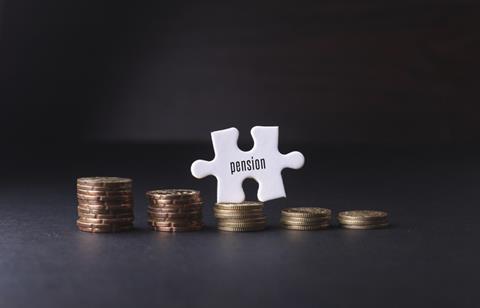
Need to know:
- Defined benefit (DB) to defined contribution (DC) transfers are becoming increasingly popular, and employers should understand the basics to help staff make the right choices.
- Employees looking for greater flexibility must also understand and be comfortable with the higher level of risk associated with DC schemes.
- Many individuals would be well advised to remain in DB schemes, and the opportunity to get impartial advice, and to walk away, must be clear.
Transferring employees out of a defined benefit (DB) pension scheme is becoming ever more common. A Freedom of Information (FOI) request, published by The Pensions Regulator (TPR) in August 2019, uncovered that the scheme submission period for 2017/2018 saw 100,000 transfers; in the 2018/2019 period, this more than doubled to 210,000.
While TPR does not hold specific figures about how many of these transfers went into defined contribution (DC) schemes, it is nevertheless important for employers to have a firm understanding about the basics of these arrangements, to help staff make the right choices.
What is a DB to DC transfer?
When transferring from DB to DC, members give up their benefits in return for a cash value which is then invested into the DC pension scheme. This requires that the employer, the scheme trustee and adviser are all on board with initiating the transfer.
For many, transferring out of a DB scheme allows more flexible access to retirement income, thanks to 2015's pension freedoms.
Bill Finch, head of sales at Salvus Master Trust, says: “Times change and a combination of economic conditions and pensions freedoms have meant that, for some people, a transfer of this nature can be the right thing to do.”
However, employees need to be fully aware of the differences between schemes, and the risks involved, for a transfer to be successful, says Mark van den Berghen, principal and senior consulting actuary at Buck.
He says: “This risk can be significant. In the case of a serious market downturn close to retirement, the value of funds in a DC scheme can fall dramatically and cause members to be left with less income in retirement, ultimately impacting their standard of living.”
Essential employee communication
The transfer from a DB to DC scheme is an important and irreversible move. Guidance from TPR advises making sure that employees have all the essential information they might need to make a fully-informed decision, including how to find a Financial Conduct Authority (FCA) authorised adviser.
Keith Richards, chief executive officer at the Personal Finance Society, says: “The decision to transfer a [DB], or safeguarded pension, is, of course, one of the more complex financial decisions a person will have to make, so it is understandable that the regulator continues to ask questions and focus on firms recommending large volumes of [DB] pension transfers, to hone the basis of their risk-based supervision.”
Why consider a DB to DC transfer
A DB to DC transfer can be of great benefit to the employee, but the receiving scheme must offer genuine value. Finch says: “It is important that the adviser chooses a scheme which offers a combination of good investment choices, low charges, and member communications that allow the policyholder to keep track of their holdings. This will enable them to make informed choices about how to invest their money, and how to realise the maximum potential of their savings when the time comes.”
DC schemes require far more responsibility on the part of the employees themselves in terms of controlling and influencing what funds they will receive when they retire, which makes it much easier for an employer to manage.
Neil Barton, head of business development (trustee solutions) at Broadstone, says: “The cost of providing DB schemes has increased considerably over the years, and the risks are elevating, while [for] DC schemes, from the perspective of an employer, the risks are very low. The risks will mostly affect the employee, as they don’t have a particularly clear idea of what they’ll receive until they get closer to retirement.”
Key considerations
Any employee thinking about transferring from a DB to a DC scheme must be reminded to factor transfer costs into their decision. Initial costs for completing a transfer can be as high as £10,000, with additional future costs payable to the DC arrangement that their transfer value is paid to, says Barton. “Worse still, members can go through this process, paying the full costs, only to be told that it isn’t in their interests to transfer,” he adds.
Berghen believes that it is vital for members to be able to walk away if they feel uncomfortable or that they are being asked to make decisions that they are not comfortable with; indeed, the FCA takes the position that most employees should be advised to remain in a DB scheme.
Steven Cameron, pensions director at Aegon, says: “Most DB members would be better off staying in their DB scheme. It’s important that the FCA weeds out any remaining poor practice, to make sure advice on DB transfers is of a consistently high standard. This will allow customers and other stakeholders to have confidence in that advice.”











